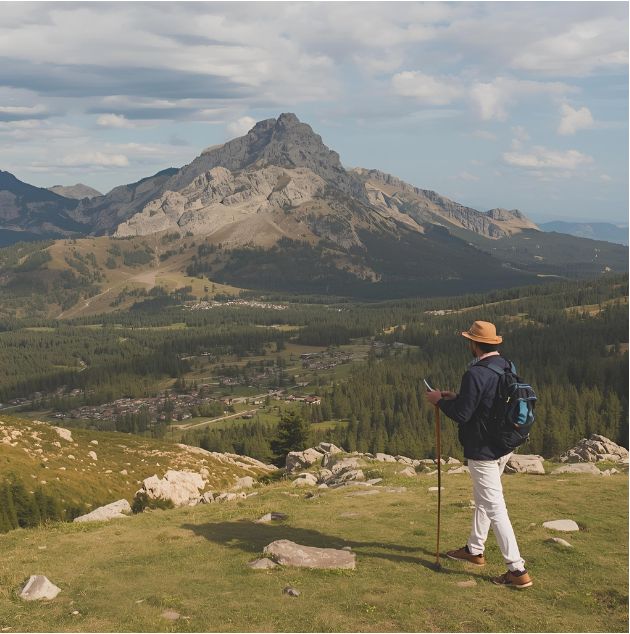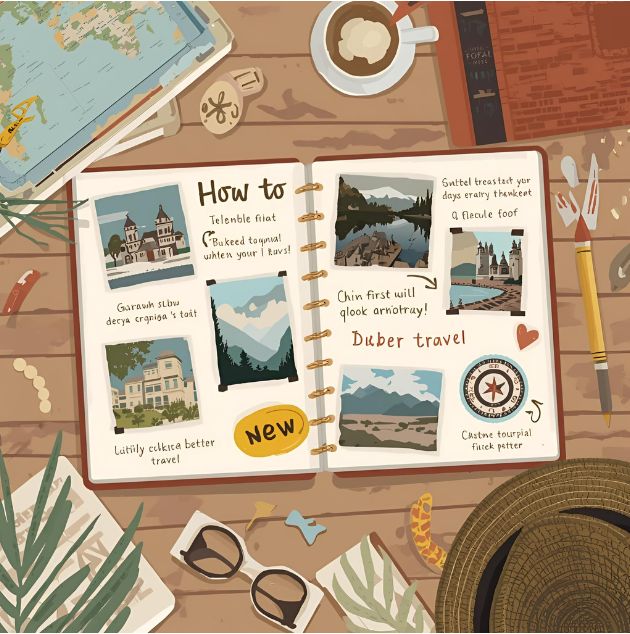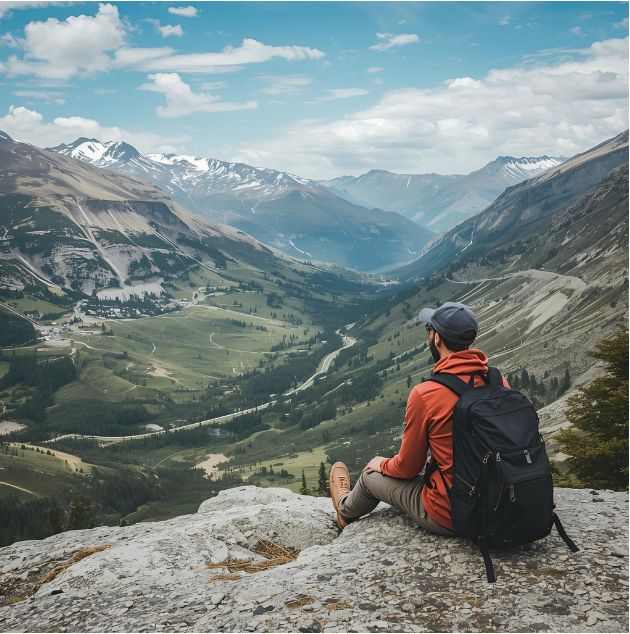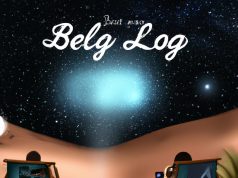The Un-Rushed Revolution: Rediscovering the World Through the Art of Slow Travel
In a world that glorifies speed, efficiency, and ticking off bucket lists, a quiet revolution is taking place in the hearts of weary travelers. It’s a conscious uncoupling from the frantic, ten-cities-in-ten-days whirlwind tour. It’s an invitation to breathe, to observe, to connect, and to truly experience a place rather than just seeing it. This is the philosophy of slow travel, and it might just be the most rewarding way to explore our planet.
Forget the pre-dawn alarms to catch the first bus to the next landmark. Imagine instead waking naturally to the sounds of a local neighborhood, sipping coffee at a café where the barista knows your order, and letting the day unfold with serendipity as your guide. Slow travel isn’t about being lazy or unproductive; it’s about being intentional. It’s a mindset shift from a consumer of destinations to a participant in a culture, trading a checklist of sights for a collection of meaningful moments.
What Exactly is Slow Travel?
At its core, slow travel is the antithesis of mass tourism. It prioritizes depth over breadth, connection over consumption. It draws inspiration from the “Slow Food” movement that began in Italy in the 1980s, which championed local culinary traditions against the rise of fast food. Similarly, slow travel advocates for a more sustainable, ethical, and emotionally resonant approach to exploring the world.
It means spending weeks, or even months, in one country or region rather than hopping between them. It’s about choosing to travel by train instead of a plane to watch the landscape transform. It’s renting an apartment in a residential area instead of staying in a tourist-centric hotel. It is, quite simply, about making time your greatest luxury.

The Core Principles: The DNA of a Slow Traveler
To truly embrace this philosophy, it helps to understand its foundational principles. These aren’t strict rules, but rather guiding lights to help you craft a more meaningful journey.
1. Fewer Destinations, More Time
This is the golden rule. Instead of trying to cram Paris, Rome, and Barcelona into one week, choose one. Give yourself the gift of time to unpack, settle in, and move beyond the surface-level attractions. Discover the local park, the small family-run restaurant, the quiet side street. This approach reduces travel fatigue and allows you to build a genuine relationship with a place.
2. Embrace Local Transportation
While flights are fast, they are bubbles that disconnect you from the journey. Opt for trains, buses, ferries, or even bicycles. Traveling overland allows you to witness the subtle shifts in geography, architecture, and culture. It’s on a second-class train carriage in India or a local bus in the Peruvian Andes where you’ll often find the most authentic interactions and unexpected stories.
3. Stay, Eat, and Shop Locally
Support the local economy directly. Choose guesthouses, family-owned B&Bs, or apartment rentals over international hotel chains. Forsake the familiar global restaurant brands for the bustling local market or the tiny ‘trattoria’ with a handwritten menu. Buying produce from a farmer’s market to cook your own meal or purchasing a souvenir from a local artisan not only gives you a more authentic product but ensures your money benefits the community you are visiting.
4. Disconnect to Reconnect
Constant connectivity can be the enemy of immersion. Challenge yourself to put your phone away. Navigate with a paper map. Ask a local for directions instead of consulting Google. When you aren’t looking at a screen, your senses are heightened. You notice the intricate tilework on a building, the smell of bread baking from a nearby bakery, the sound of children playing in a square. You reconnect with your surroundings and, ultimately, with yourself.
5. Leave Room for Spontaneity
A rigid, hour-by-hour itinerary is the hallmark of a rushed trip. Slow travel thrives on flexibility. Plan your key anchor points – where you’ll sleep, perhaps a must-see museum – but leave vast swathes of your days open. This is where the magic happens. A conversation with a shopkeeper might lead to a recommendation for the best local festival. An aimless wander might lead you to a hidden garden. Be open to saying “yes” to unexpected opportunities.
6. Learn and Respect
Take the time to learn a few basic phrases in the local language. “Hello,” “please,” and “thank you” can go a long way in breaking down barriers and showing respect. Read about the local customs, history, and social etiquette before you go. Understanding the context of the place you are visiting transforms you from a passive observer into an engaged and respectful guest.
How to Plan Your First Slow Travel Adventure
Transitioning to a slower pace requires a mental shift during the planning phase. Here’s how to get started.

- Choose Your Destination Wisely: Not all places are created equal for slow travel. Look for destinations with a strong local culture, good public transportation, and a variety of experiences within a single region. A country like Vietnam, with its excellent train and bus network connecting diverse regions, is ideal. A single region like Andalusia in Spain or the South Island of New Zealand also offers immense depth for a slow explorer.
- Rethink Your Itinerary: Start by identifying your “must-dos,” then build a loose framework around them. Instead of thinking, “Day 1: Museum, Day 2: Monument,” think, “Week 1: Explore the historic quarter, visit the main market, and take a cooking class.” This gives you structure without being restrictive.
- Pack for Living, Not Just Visiting: Since you’ll be staying longer, pack for comfort and versatility. Include items that make you feel at home, like a good book, a travel journal, or a small coffee maker. Packing layers is always a good idea, allowing you to adapt to changing weather without overpacking.
- Budget for Depth, Not Distance: Slow travel can often be more budget-friendly. You save money on transportation by not moving every day. Renting an apartment with a kitchen allows you to save on meals. You can take advantage of weekly or monthly discounts on accommodation and transport passes. Your biggest expense shifts from transit to experiences.
Ideal Destinations for the Aspiring Slow Traveler
While any destination can be experienced slowly, some places particularly lend themselves to this style of travel.

- Tuscany, Italy
- The birthplace of the Slow Food movement is the quintessential slow travel destination. Base yourself in a small hill town, explore local vineyards, take leisurely drives through cypress-lined roads, and spend your afternoons learning the art of pasta-making. The philosophy of “il dolce far niente” (the sweetness of doing nothing) is alive and well here.
- Kyoto, Japan
- While Tokyo is a whirlwind of energy, Kyoto moves at a more contemplative pace. Spend your days wandering through serene Zen gardens, observing the meticulous rituals of a tea ceremony, and exploring ancient temples. The city’s grid layout makes it wonderful for exploring on foot or by bicycle, allowing you to discover hidden shrines and traditional artisan shops.
- The Mekong Delta, Vietnam
- Here, life flows with the river. Base yourself in a city like Can Though and explore the intricate network of waterways by boat. Visit floating markets at dawn, cycle through lush fruit orchards, and stay with local families in homestays. It’s an immersion into a way of life that is completely dictated by the rhythms of nature.
- Oaxaca, Mexico
- A vibrant hub of indigenous culture, art, and arguably Mexico’s best cuisine. Settle in for a few weeks to explore the colorful city, take a deep dive into the world of mezcal production in the surrounding valleys, visit ancient Zapotec ruins, and learn about traditional weaving from local artisans.
The Unseen Benefit: A Journey Inward
Ultimately, the most profound impact of slow travel isn’t just about seeing the world differently; it’s about seeing yourself differently. By slowing down, you strip away the distractions of daily life. You are forced to be present, to be patient, and to be resourceful. You learn to be comfortable with solitude and to find joy in simple observations.
It’s in the quiet moments – watching the sunset from a balcony, sharing a smile with a vendor who doesn’t speak your language, mastering the local bus system – that travel transforms from a simple vacation into a period of genuine growth and reflection.
So, on your next trip, dare to do less. Unpack your suitcase, put away the checklist, and open yourself up to the world. You might find that the greatest journey is the one that happens when you finally decide to stand still.
If you’re planning your first solo adventure and want practical guidance on navigating new destinations, choosing accommodations, and creating meaningful experiences, you might also find The Solo Traveler’s Compass: A Comprehensive Guide to Your First Adventure extremely helpful.”








